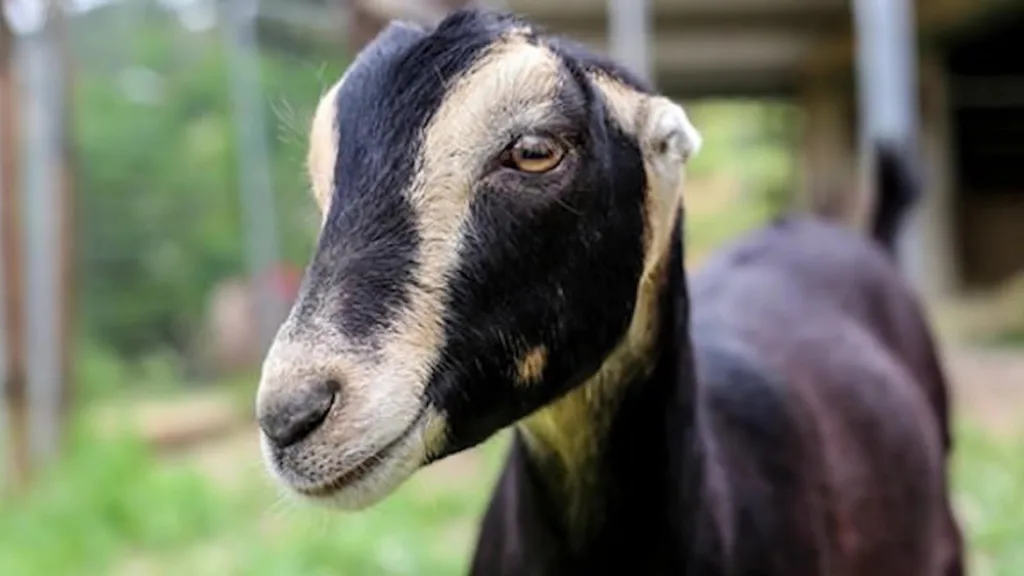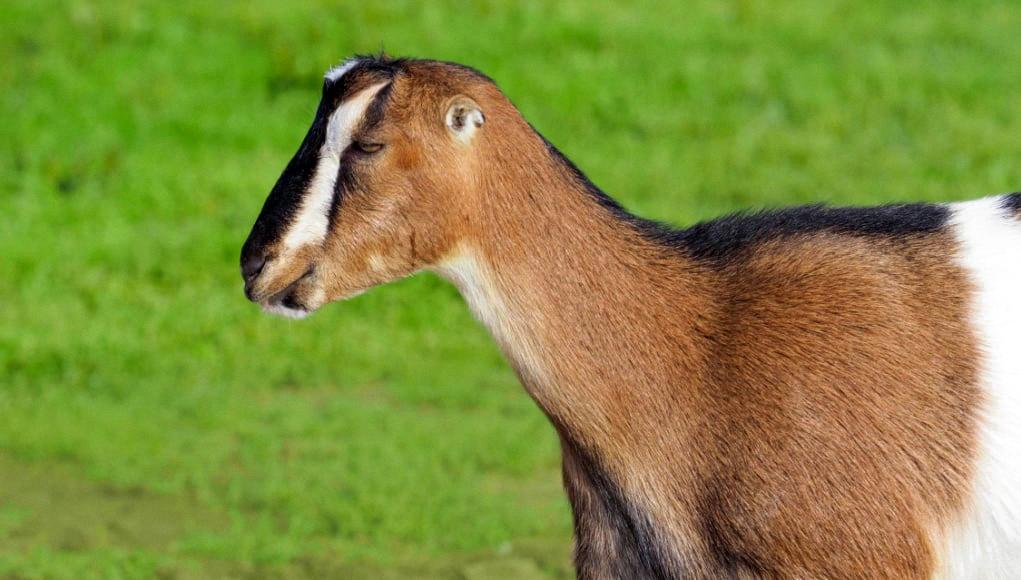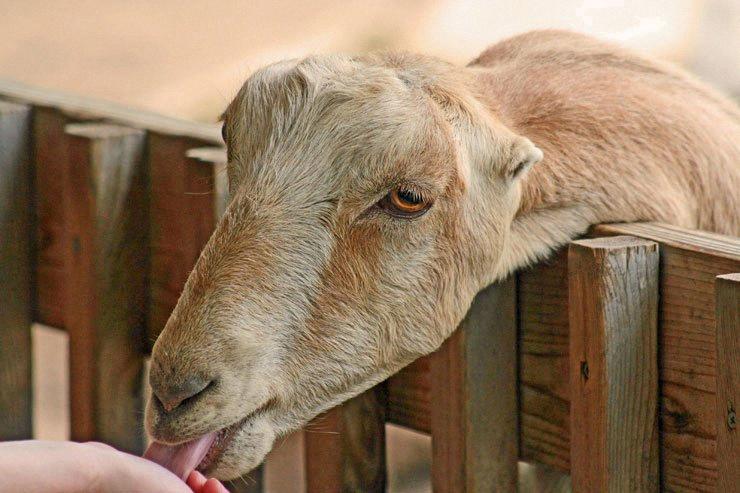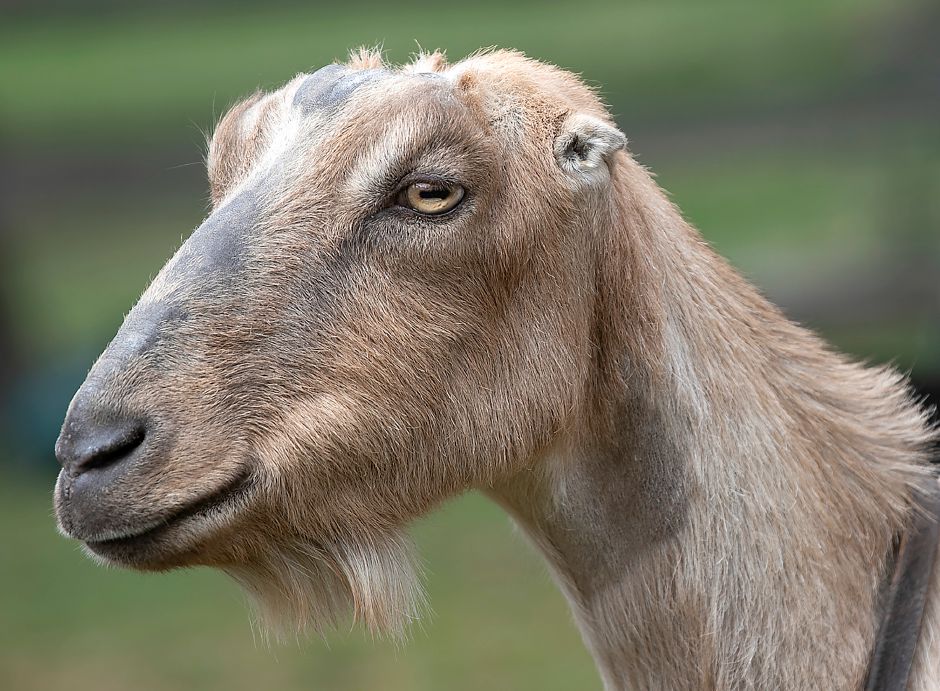Earless goats are a unique and fascinating breed that has captured the attention of many animal lovers worldwide. These goats are commonly known as LaMancha goats, and they are easily recognizable by their very short ear pinnae. Though they may appear to be earless, they do have small, cartilage-less ears that are only up to one inch (2.5 cm) long.
One of the most remarkable things about LaMancha goats is their high milk production. They are known for producing a copious amount of milk, and the butterfat content in their milk is comparatively high. This makes them highly sought after by dairy farmers and those who are interested in producing artisanal dairy products.
LaMancha goats have a people-loving temperament, which makes them great pets for families. They are friendly and affectionate and enjoy being around people. They are also easy to manage, making them an excellent choice for first-time goat owners.
The origin of LaMancha goats can be traced back to Spanish goats brought by early settlers to California. Over time, these goats were selectively bred to develop the unique earless trait that we see today. The breed was officially recognized by the American Dairy Goat Association in 1958.
LaMancha goats come in a variety of colors, including black, brown, white, and even spotted. They have a sturdy build and weigh between 130-150 pounds (59-68 kg) for does and 160-180 pounds (73-82 kg) for bucks. They are a medium-sized breed of goat and can be easily housed in a backyard or small farm.
In addition to their high milk production and friendly temperament, LaMancha goats are also known for their hardiness. They can thrive in a variety of climates and are resistant to many common goat diseases. They are also relatively low maintenance and do not require extensive grooming or care.
Earless goats, or LaMancha goats, are a unique and fascinating breed that has captured the hearts of many animal lovers. They are known for their high milk production, friendly temperament, and hardiness, making them an excellent choice for dairy farmers and pet owners alike. If you are considerig adding a goat to your family, the LaMancha goat is definitely worth considering.
The Unusual Characteristics of Earless Goats
An earless goat, also known as a LaMancha goat, is a breed of domestic goat that has very short ear pinnae, which can appear to be completely absent. These goats are highly recognizable due to their unique ear appearance and are known for their high milk production and friendly temperament. Unlike other goat breeds, LaMancha goats have ear cartilage that is curled and tucked close to their head, giving the appearance of earlessness. Despite their unusual ear appearance, LaMancha goats are highly valued for their milk, which has a high butterfat content and is often used in cheese-making.

The Absence of Ears in LaMancha Goats
LaMancha goats are not actually earless, but they do have very small ears. This is due to a genetic mutation that causes the development of a very short cartilage in the outer ear, known as the pinna. In some individuals, this cartilage is so small that it is almost non-existent, giving the appearance of an earless goat. This trait is known as “gopher ears” and is a defining characteristic of the LaMancha breed. The origin of this mutation is not entirly clear, but it is thought to have occurred naturally in a population of goats in the LaMancha region of Spain. Today, the LaMancha breed is popular for its high milk production and unique appearance, including its distinctive ears.
The Absence of Ears in LaMancha Goats
Actually, LaMancha goats do have ears, but their ears are much shorter than those of other goat breeds. In fact, LaMancha goats are known for their unique ear shape and size, wich is a distinguishing characteristic of the breed. The ideal ear length for LaMancha goats is very short, with no more than one inch of an external ear. This short ear length is referred to as “gopher ears.” However, slightly longer ears, known as “elf ears,” are also acceptable in female LaMancha goats. The reason for the short ear length is a genetic mutation that occurred naturally in the breed. This mutation has been selectively bred to maintain the distinctive appearance of LaMancha goats. The shorter ear length also provides some practical benefits, such as reducing the risk of ear injuries and making it easier to handle and milk these goats. the unique ear shape and size of LaMancha goats is a fascinating aspect of this breed that sets them apart from other goats.
Are LaMancha Goats Born Without Ears?
LaMancha goats are not born without ears. However, they are born with small ears that are barely visible. This breed is knwn for its unique ear characteristics, with the ear pinnae being either nonexistent or very small. The ear canal is still present, allowing the goats to hear normally. The lack of external ears is due to a genetic mutation that occurred in the breed’s development, and it is a distinguishing feature of the LaMancha goat. So, to sum up, LaMancha goats are not born without ears, but they do have small or nonexistent ear pinnae that make them stand out from other goat breeds.
The Rarest Type of Goat
The rarest type of goat is the Arapawa goat breed. This breed is considered extremely rare, and perhaps one of the rarest in the world. The breed’s history dates back to 1773, when Captain Cook sailed to the island of Arapawa, located off the coast of New Zealand, with only 2 Old English Milk goats. These goats were left on the island and over time, they adapted to the harsh environment and developed into a distinct breed. Arapawa goats are small in size, with a weight of only about 50-70 pounds. They have a unique appearance with short, curly hair, and a variety of colors including black, brown, and white. Due to their rarity, efforts are being made to preserve this breed and increase their population.

Source: thehappychickencoop.com
The Friendliest Goat Breed
If you are looking for a friendly goat breed, the Nigerian Dwarf goat is an excellent choice. These goats are known for their gentle and affectionate nature, making them popular as pets and show animals. They are also very social creatures and enjoy being around people, making them a great addition to any household or farm. Nigerian Dwarf goats are small in size, which makes them easy to handle and care for. They have a playful personality and enjoy interacting with their owners, oftn following them around and seeking attention. In addition, these goats are excellent milk producers, making them a practical choice for those looking to raise goats for milk. the Nigerian Dwarf goat is a wonderful breed known for its friendly and sociable nature, making them a great choice for anyone looking to raise goats as pets or for farming purposes.
The Edibility of LaMancha Goats
One can eat LaMancha goats. In fact, goat meat, also known as chevon, is a popular meat choice in many cultures around the world. LaMancha goats are a breed of dairy goats that can also be raised for meat. Their meat is lean and flavorful, and can be used in a variety of dishes, from stews to curries to grilled cuts. It is important to note that the quality of the meat depends on the age, gender, and diet of the goat. Typically, younger goats produce more tender meat, while older goats are better suited for slow-cooking. It is recommended to source goat meat from a reputable farm that practices ethical and sustainable farming methods. Additionally, goat meat is a good source of protein, iron, and othr essential nutrients, making it a healthy and delicious alternative to other meats.
Are LaMancha Goats Friendly?
LaMancha goats are knwn for their easy-going and friendly personalities. They are a popular choice for farmers and homesteaders because of their docile nature, which makes them easy to handle and work with. LaMancha goats are also a great choice for families looking for a pet as they are gentle and enjoy human interaction. They are known to be curious and social creatures, often seeking out attention from their owners. Additionally, LaMancha goats are adaptable to different environments and are generally low-maintenance animals, making them a great choice for those new to goat farming or pet ownership. LaMancha goats are a friendly and easy-to-handle breed that can make great companions for both farmers and families alike.
Do LaMancha Goats Consume Grass?
LaMancha goats do eat grass as part of their natural diet. However, they also consume other types of vegetation such as brush, shrubs, and other plants. While grass is an important component of their diet, it is not the only source of nutrition for tese goats. In addition, most farmers supplement their LaMancha goats’ diet with fresh hay to ensure they receive the necessary amount of dietary crude protein and fiber. the best diet for LaMancha goats should consist of 7% dietary crude protein and 50% dietary fiber, which can be obtained from a variety of natural vegetation and supplemented with hay as needed.

Source: homesteadontherange.com
The Reasons Behind the Practice of Cutting Off Goats’ Ears
It is not common practice for farmers to cut off goats’ ears. However, in some cases, farmers may choose to make a cut or mark in the ear of their goats, also known as an earmark. This may be done to indicate ownership or to track the birth year or sex of the animal. Earmarks are a traditional and effective way to identify individual animals and keep track of them in a herd. It is important to note that earmarks should be made using safe and humane methods, and farmers should always prioritize the welfare of their animals.
The Cost of LaMancha Goats
LaMancha goats can vary in price depending on thir age, gender, and breeding. Purebred, American, or Experimental LaMancha doelings (female goats) can range from $299 for 1 to 4 weeks old, $349 for 4 weeks to 3 months old, and $399 for over 3 months old. These prices include ADGA registration. Breeding bucklings (male goats) can range from $299 for 1 to 4 weeks old and $399 for 4 weeks to 3 months old. It’s important to note that these prices are for buyer’s choice of Purebred, American, or Experimental goats. Other factors such as show quality, genetics, and bloodlines can also affect the price of LaMancha goats. LaMancha goats are a valuable investment for their milk production, hardiness, and docile temperament.
Cost of a Mini LaMancha Goat
If you are interested in purchasing a mini LaMancha goat, you can expect to pay between $300 and $400 for a baby goat. However, if you are looking for a well-bred, mature goat, you may have to spend up to $600. It is important to note that while mini LaMancha goats are cheaper than standard dairy goats, they still require a financial investment. Additionally, the cost may vary depending on the breeder, location, and other factors. So, beore purchasing a mini LaMancha goat, it is recommended that you do some research and compare prices from different breeders to ensure that you get the best value for your money.
Feeding Habits of LaMancha Goats
Like most goats, Lamancha goats are browsers that enjoy eating leaves, weeds, and grass. At the Zoo, they are typically fed a nutritionally-balanced pellet to ensure they receive all the necessary nutrients they need to stay healthy. However, in their natural habitat, LaMancha goats are known to consume a variety of foods, including weeds, shrubs, leaves, and even bark. They are highly adaptable and able to survive on a diet of roughage, althugh they may also consume grains and other supplemental feeds if they are available. LaMancha goats are versatile eaters and can thrive on a wide variety of foods, as long as their nutritional needs are being met.

Average Lifespan of LaMancha Goats
LaMancha goats typically have a life expectancy of seven to 10 years. This breed of goats is often kept for their high milk production and is known for their mild temperament and easy-to-maintain physical characteristics. However, like all living beings, their lifespan can be influenced by various factors such as health, nutrition, and environmental conditions. It is important to provide proper care and attention to ensure the longevity and well-being of LaMancha goats.
The Jumping Ability of LaMancha Goats
LaMancha goats are a breed of dairy goats that are knon for their calm and friendly temperament. In terms of jumping ability, LaMancha goats are similar to other breeds of goats and can typically jump between 4-5 feet high (1). However, it’s worth noting that the actual height a LaMancha goat can jump will depend on several factors, including their age, size, and physical fitness. Additionally, their jumping ability may be affected by environmental factors such as the terrain and the height of the obstacle they are trying to clear. Therefore, it’s important to ensure that any fencing or enclosures used to contain LaMancha goats are at least 6 feet high to prevent them from escaping.
Conclusion
The LaMancha goat breed is well-known for its distinctive earless appearance, with a pinnae length of up to one inch or none at all. These goats are highly valued for thir high milk production and high butterfat content in their milk, making them a popular choice for dairy farmers. While some may find their earless appearance unusual, it is a genetic trait that has been naturally passed down from their Spanish goat ancestors. Despite their unique appearance, LaMancha goats are known for their gentle and friendly temperament, making them a favorite among goat enthusiasts. the LaMancha goat is a unique and valuable breed that continues to thrive in the world of goat farming.
